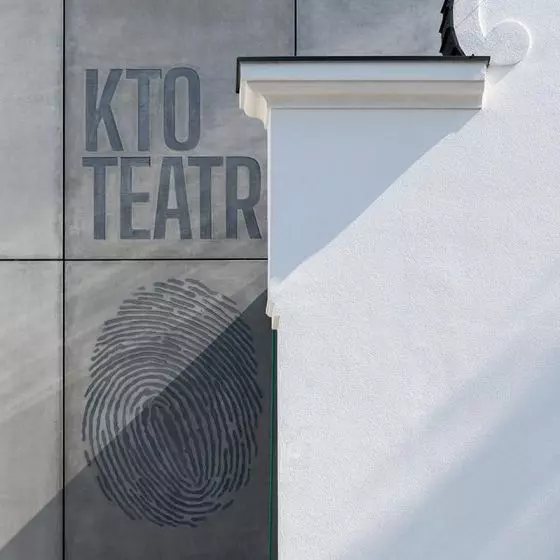This year's eighth edition of the Mood for Wood international student design workshop was held under the motto Into the wild. Participants from Poland, Germany and Latvia, under the watchful eye of tutors, designed and made five pieces of wooden urban furniture to bring the residents of Poznan closer to the wild and untamed nature of the picturesque Oak Ponds.



furniture for dendrotherapy, design by Karol Zurawski's team
photo: Dawid Majewski
Fifty students, acting in five teams, focused on the aforementioned area located in the south of the city, the Debina forest, which contains four ponds - Grundela, Sunny, Oak and Borusa.
Their undiscovered banks are a unique place to commune with nature, whose intact fabric positively affects the well-being of residents. Their unique character - wild nature enclosed in the center of the metropolis encourages both strolls or picnics, but is also one of the favorite places of fishing enthusiasts and ornithology lovers. After public consultations preceding each edition of the workshop, it became clear that the furniture created this year, in addition to the possibility of use during environmental education activities, must also have therapeutic qualities, having a positive impact on our well-being and balance of body and mind, the event's organizers explain.
To meet the challenge, the first team led by two Poznań-based architects - Hugon Kowalski of UGO Architecture and Mikołaj Stępień of NMS architects - designed a platform for meditation and nature observation right on the Borus Pond. The wooden piece of furniture is made up of three elements varying in shape and size. The platform is intended to serve both group meditation meetings and individual, calming sessions. The structure, the workshop organizers explain, follows the topography of the terrain and circles around the roots of a nearby tree, respecting nature and blending seamlessly with the landscape.



Platform for meditation and nature observation at Borusa Pond, project by the team of Hugon Kowalski and Mikolaj Stępień
photo: Dawid Majewski
The second group was led by Irina Matei, an architect working in Berlin. Her team created a piece of furniture for dendrotherapy (a method of promoting human well-being and mental health through contact with trees) under an oak tree that is more than a century old - a monument to nature. The team of young designers, on the basis of spatial, functional and natural analyses, created a structure supporting breathing exercises and observation of the tree and its surroundings, built from three fused elements - a lounger, a multifunctional furniture that binds the whole, and a bench that allows close contact with the bark of the said tree.
{Image@url=https://cdn.architekturaibiznes.pl/upload/galerie/58237/images/original/fcce0f4847c3cfe45a48714d777f9dee.jpg,alt=mebel for dendrotherapy, design of Irina Matei's team,title=furniture for dendrotherapy, design of Irina Matei's team}
furniture for dendrotherapy, design by Irina Matei's team
photo: Dawid Majewski
The group, led by Karol Żurawski of Atelier Karol Żurawski, also worked in the area of tree-related relaxation techniques - the shinrin-yoku, known from Japan for its health-promoting forest baths.
The furniture designed by this group was created in a very special place, on the northern edge of the Dębinski Forest where, in the 19th century, Princess Ludwika Radziwill of Hohenzollern built a forest palace - the stately building unfortunately did not survive - but eleven monumental oak trees planted by the duchess on the border of the estate have survived. Under one of these trees was created a simple piece of furniture - a bench. The designers were keen that the object should not overshadow the power of the place and the power of nature, which definitely dominated the entire surroundings. A solid, heavy structure was used, which with its size attracts the attention of passers-by and encourages relaxation. The simplicity of the bench's finish brings order to the wildness of the forest. It was important to create a very comfortable seat that could be used by everyone, including people with limited mobility. A very high backrest separates users contemplating nature from disturbances coming from the road or forest path. All this makes the place perceived in an almost sacred, mystical way. The bench encloses the space around the tree and gives the impression of being in a temple, being in a sacred zone, the workshop organizers explain.



furniture for dendrotherapy, design by Karol Zurawski's team
photo: Dawid Majewski
In addition to places that primarily help with rest and tranquility, the students also created birdwatching points - one by the Słoneczne pond prepared by a group led by the JEJU studio team from Poznań - Iwo Borkowicz and Adam Siemaszkiewicz - in the form of a modest circular platform with a recessed covered bench;



bird observation point, a project by the team of Iwo Borkowicz and Adam Siemaszkiewicz
photo: Dawid Majewski
and the other over the Brewery Pond in Kobylepol, which was created by a group under the supervision of Latvian architects from Nomad architects studio Katrina Dambe and Florian Betat. The two-level observatory is formed by a lower space with comfortable seating, a canopy that protects against wind and rain, and storage space for equipment, which allows observation from the level of the water surface, and an upper platform whose sculpted form brings to mind the wings of a bird taking flight. What's more, the birds engraved on the piece of furniture and the QR codes next to it tell you what species are most commonly seen in the area.
{Image@url=https://cdn.architekturaibiznes.pl/upload/galerie/58250/images/original/78152bc8715b6935fdf5d57639bf790f.jpg,alt=punkt birdwatching point, design by the team of Katrina Dambe and Florian Betat,title=birdwatching point, design by the team of Katrina Dambe and Florian Betat}
birdwatching point, a project by the team of Katrina Dambe and Florian Betat
photo: Dawid Majewski
The Mood for Wood workshops are a huge challenge for all participants, however, they always leave behind the satisfaction of a change created with their own hands - a piece of a better space. Already today, as organizers, we invite all design students to the next two editions, which will be held in July and August 2022," the organizers conclude.
























































